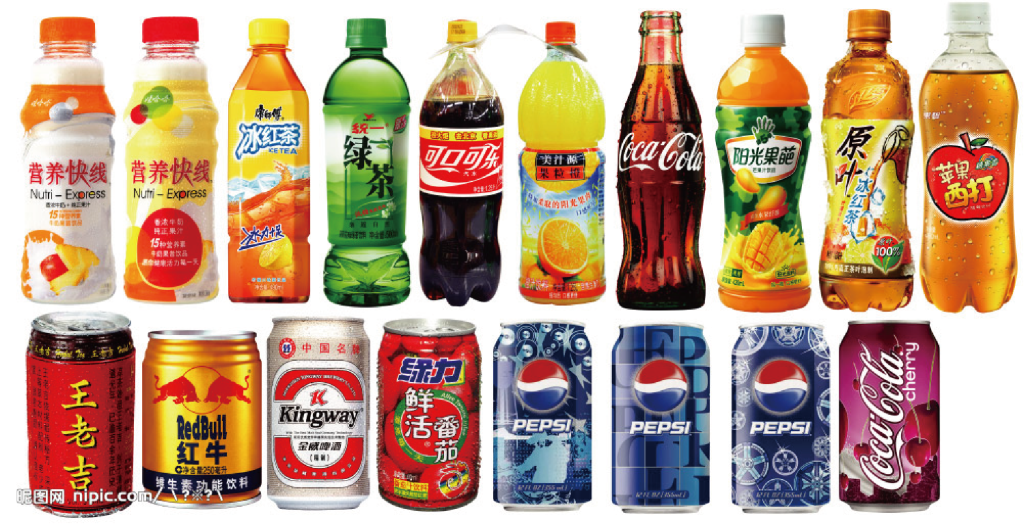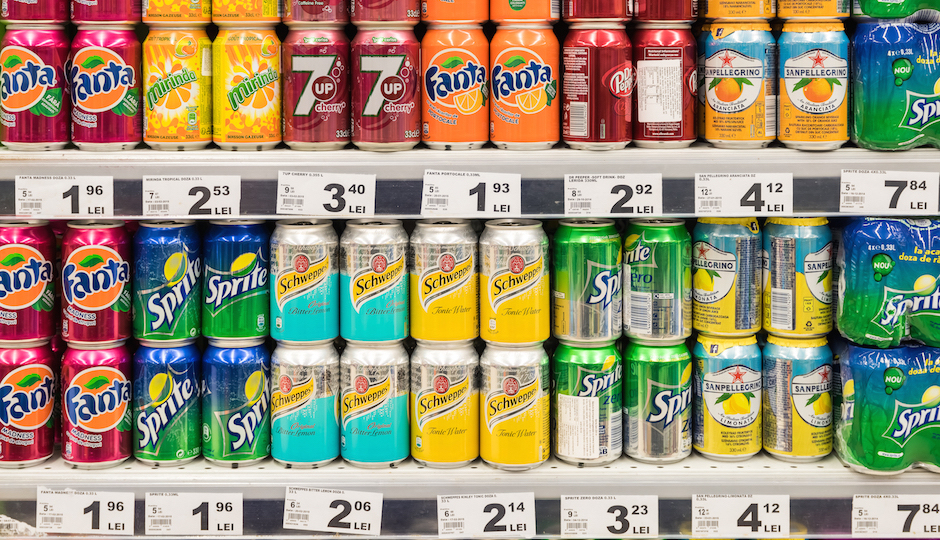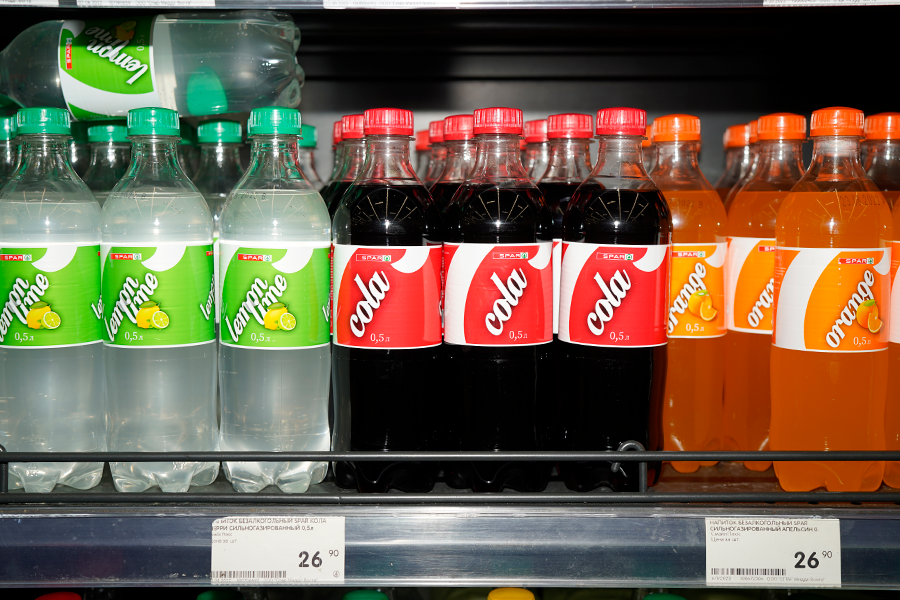introduction
In the vibrant and ever-evolving world of consumer goods, few categories are as universally recognized and enjoyed as soda. From fizzy colas to citrus-flavored delights, soda has been a staple in households worldwide for generations. But as we zoom into 2024, the soda market is experiencing some intriguing shifts, influenced by changing consumer preferences, health trends, and innovative marketing strategies. This article explores the current state of the soda market and its implications for brand management, all while keeping things light and fun.

The Fizzy Landscape of 2024
The Big Players and New Contenders
The soda industry in 2024 is still dominated by the big names we all know and love: Coca-Cola, PepsiCo, and Dr Pepper Snapple Group. These giants continue to lead the market with their vast portfolios of beverages that cater to a wide range of tastes and preferences. However, the scene is becoming increasingly competitive with the rise of smaller, innovative brands and the influx of new flavors and healthier options.
Brands like LaCroix, Bubly, and Olipop are making waves with their unique offerings. LaCroix, with its bold and often polarizing flavors, appeals to a younger, health-conscious demographic. Bubly, backed by PepsiCo, blends the familiar with the trendy, offering sparkling water with a hint of fun through its colorful branding and playful marketing. Olipop, on the other hand, positions itself as a healthy soda alternative, packed with prebiotics and natural ingredients.
Trends Shaping the Market
The soda market is not just about who is selling what; it’s also about how and why consumers are buying. Several key trends are shaping the landscape in 2024:
- Health and Wellness: With the increasing awareness of health and wellness, many consumers are reducing their intake of sugary drinks. This shift is driving the demand for zero-calorie, low-sugar, and natural sodas. Brands are responding by reformulating classic drinks and introducing new, healthier options.
- Sustainability: Environmental concerns are prompting both brands and consumers to prioritize sustainability. Eco-friendly packaging, reduced plastic use, and ethical sourcing are becoming significant selling points. Coca-Cola’s initiative to use 100% recycled PET bottles is one example of how brands are addressing this demand.
- Exotic and Novel Flavors: Gone are the days when cola, lemon-lime, and orange were the only soda flavors. Today’s consumers are adventurous, seeking out exotic and unique tastes. Flavors like elderflower, yuzu, and hibiscus are gaining popularity, offering a refreshing twist to the traditional soda experience.
- Personalization: The desire for personalized experiences is spilling over into the beverage market. Customizable drinks, where consumers can mix and match flavors or adjust sweetness levels, are becoming more common. This trend is especially popular among younger consumers who crave individuality and uniqueness.
Market Challenges
Despite the vibrant and dynamic nature of the soda market, it is not without its challenges. Health concerns over sugar content and artificial ingredients have led to declining sales of traditional sodas. Additionally, competition from other beverage categories, such as energy drinks, flavored waters, and ready-to-drink teas and coffees, is intense.
Regulatory pressures also pose a challenge. Governments worldwide are implementing stricter regulations on sugary drinks, including higher taxes and more stringent labeling requirements. These measures aim to curb obesity and other health issues but can impact sales and profitability.

Brand Management in the Modern Soda Market
Navigating Consumer Preferences
Understanding and adapting to consumer preferences is crucial for any brand, and in the soda market, this means staying ahead of trends and being responsive to changes. For instance, the shift towards health-conscious choices requires brands to innovate continually, offering products that meet the demand for low-calorie and natural ingredients without sacrificing taste.
Brands are investing in research and development to create healthier alternatives. Coca-Cola has expanded its portfolio with drinks like Coca-Cola Zero Sugar, which provides the classic Coke taste without the calories. Similarly, PepsiCo’s acquisition of SodaStream allows consumers to make their own sparkling beverages at home, giving them control over the ingredients and sweetness levels.
Marketing and Branding Strategies
Marketing and branding in 2024 require a blend of tradition and innovation. Established brands continue to leverage their heritage and global recognition while embracing modern marketing techniques to stay relevant.
- Storytelling and Authenticity: Consumers are drawn to brands with a story. Sharing the history, values, and mission behind a product can create a strong emotional connection. Brands like Dr Pepper, with its rich heritage dating back to the 1880s, capitalize on this by emphasizing their unique story in marketing campaigns.
- Social Media and Influencer Marketing: Social media platforms are pivotal in reaching and engaging with consumers. Brands are utilizing influencers and social media personalities to promote their products, making them more relatable and appealing to a younger audience. Interactive campaigns, hashtags, and challenges can go viral, boosting brand visibility and engagement.
- Experiential Marketing: Creating memorable experiences can leave a lasting impression on consumers. Pop-up events, tasting sessions, and branded merchandise are ways to engage with customers on a personal level. For example, Pepsi’s interactive vending machines and Coca-Cola’s “Share a Coke” campaign, which features personalized bottles, are successful examples of experiential marketing.
The Role of Technology
Technology is playing an increasingly vital role in brand management. From leveraging data analytics to understand consumer behavior to using AI for personalized marketing, tech is transforming how brands interact with their audience.
- Data-Driven Insights: Collecting and analyzing data helps brands understand consumer preferences, track trends, and measure the effectiveness of marketing campaigns. This information allows for more targeted and efficient marketing strategies.
- Augmented Reality (AR) and Virtual Reality (VR): AR and VR are being used to create immersive experiences. Imagine pointing your phone at a soda bottle and seeing an interactive story or game come to life. These technologies can make brand interactions more engaging and memorable.
- E-commerce and Direct-to-Consumer (DTC) Models: The rise of e-commerce has given brands new avenues to reach consumers. Direct-to-consumer models allow brands to sell their products online, bypassing traditional retail channels. This approach not only increases profit margins but also provides valuable consumer data.

Humor and Creativity in Marketing
In a market saturated with choices, standing out is crucial. Humor and creativity can make a brand memorable and engaging. Witty advertisements, funny social media posts, and quirky packaging can capture consumer attention and foster brand loyalty.
Take, for instance, the humorous rivalry between Coke and Pepsi. Their playful jabs at each other in advertisements not only entertain but also keep consumers talking about both brands. Similarly, quirky campaigns like Mountain Dew’s “Do the Dew” resonate with a youthful audience, blending humor with a call to action.
The Future of Soda: Predictions and Opportunities
Healthier Alternatives
The trend towards healthier living is not just a fad; it’s a long-term shift. Brands that can innovate and offer healthier alternatives will have a competitive edge. Expect to see more sodas with natural sweeteners like stevia, erythritol, and monk fruit, as well as beverages fortified with vitamins, minerals, and functional ingredients like probiotics.
Sustainable Practices
Sustainability is more than a buzzword; it’s becoming a core expectation from consumers. Brands that can reduce their environmental footprint through sustainable sourcing, eco-friendly packaging, and carbon-neutral production processes will resonate with eco-conscious consumers.
Technological Integration
The integration of technology into the consumer experience will continue to grow. From AI-driven personalized marketing to blockchain for transparent supply chains, technology will play a significant role in shaping the future of the soda market.
Global Expansion and Local Adaptation
As brands expand globally, they must adapt to local tastes and preferences. This might mean introducing new flavors that cater to regional palates or tweaking existing products to meet local dietary habits. The ability to balance global reach with local relevance will be key to success.
Conclusion
The soda market in 2024 is a dynamic and competitive landscape, influenced by health trends, technological advancements, and shifting consumer preferences. For brands, this environment presents both challenges and opportunities. Effective brand management will require a deep understanding of market trends, innovative marketing strategies, and a willingness to adapt and evolve.
While the big names like Coca-Cola and PepsiCo continue to dominate, smaller brands are making their mark with unique offerings and creative marketing. The future of soda will likely see a blend of tradition and innovation, with brands leveraging their heritage while embracing new trends and technologies.
In the end, whether you’re a fan of classic colas, adventurous flavors, or healthier alternatives, there’s no denying that the soda market remains an exciting and integral part of our lives. So, grab your favorite fizzy drink, sit back, and enjoy the bubbly ride!